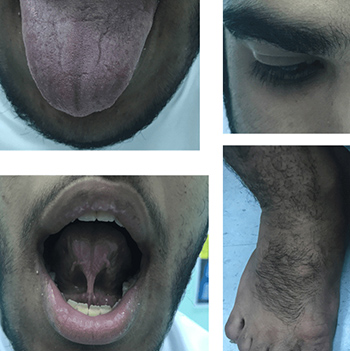Keywords
Pituitary, growth factors, acromegaly, pseudoacromegaly, adenoma
Abstract
Acromegaly is characterized by excess skin and soft tissue growth due to increased growth hormone (GH) levels. Patients with similar physical findings but without somatotroph axis abnormalities are considered to have pseudoacromegaly. The list of pseudoacromegaly differential diagnoses is long. It may be caused by several congenital and acquired conditions and diagnosis can be challenging due to its rarity and occasional overlapping of some of these conditions. The presence of a pituitary tumour in such cases may lead to a misdiagnosis of acromegaly, and thus, biochemical evaluation is key. Here, we present a case of pseudoacromegaly with an acromegaloid phenotype, normal IGF levels, a supressed GH response to an oral glucose tolerance test, moderate insulin resistance and non-functioning pituitary microadenoma.
References











